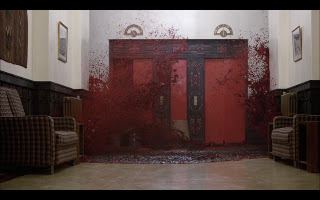Passengers
Noticing people, their
behaviour and reactions is the core element in this photography project.
Capturing surface, which is human facial expressions in this case, tells us
their individual stories as well as tendencies of life in the city. Apathy, exhaustion,
anonymity, alienation and detachment... Public transport is where these things
come across very vividly. Place where time gets distorted, people get carried
away with their own matters, even though the environment is always changing and
unstable. It is as if every person there creates his/her own tiny private
space. This is a collection of personal moments in public. Real, spontaneous or
still emotions of a human being in the routine of the city.
Many students use HDSLR
Cameras for filming their projects. My college ‘Ieva Austinskaite’ who studies BA Photography course at Middlesex
University, asked for help in producing short clip for her final project ‘Passengers’ I decide to test my new “Canon
5D Mark iii” camera to this project. Lancester in his book ‘Dslr cinema – crafting the film look with
large sensor video cameras’ covers the cinematographer’s toolkit, which provides
the cinematic look, the ‘film look’. This
book describes benefits and designs the possibilities of using DSLR’s cameras. From
my point of view as a low budget filmmaker, I found this technology as the best
choice because this camera has good data rate, processing power, and capability
to perform more uncompressed media capture. During the process of filming
‘Passengers’, our main object was to capture personal emotions of people during
their trip in the public transport, which was quite challenging. In order to
shot this this short clip it was necessary to use long lens and fast blocking
shots. “Blocking is where, when, and how subjects are placed and move in the
composition, whether working with actor or characters in a documentary. How
they are placed, when they move, where they move from, and where they go are
dependent on the story” Lancaster, (2013: 9). During this project we faced few
main problems. One of them was the choice of the tripod. With long lens is essential
to have really stable tripod, because during the filming with 200mm lens even a
small touch of the tripod would make big differences in postproduction. As a
result, even the stabilizer effect would not save the footage – it becomes
really shaky and hardly fixable. This project involved Timing, pacing and rhythm.
The rhythm making process depends on duration and the placement of the shot. In
Post – production I was editing in three different windows (Fig.1) Moreover,
three different timelines were required as well as specific locations of shots
as a result of different duration of each of them. “Timing is the attribute of
rhythm that arises as en editor determines when cuts and shots occur. There are
three aspects of timing to be considered when discussing rhythm in film
editing: choosing the frame, choosing duration and choosing the placement of
the shot. “Karen (2009: 44).
(Fig.1)
Karen, P. (2009) Cutting Rhythms: Shaping the Film Edit. Amsterdam: Focal/Elsevier
Lancaster, K. (2013) DSLR Cinema. Crafting the Film Look with Large Sensor Video Cameras. 2nd, Rev. Ed. Oxford: Focal



























